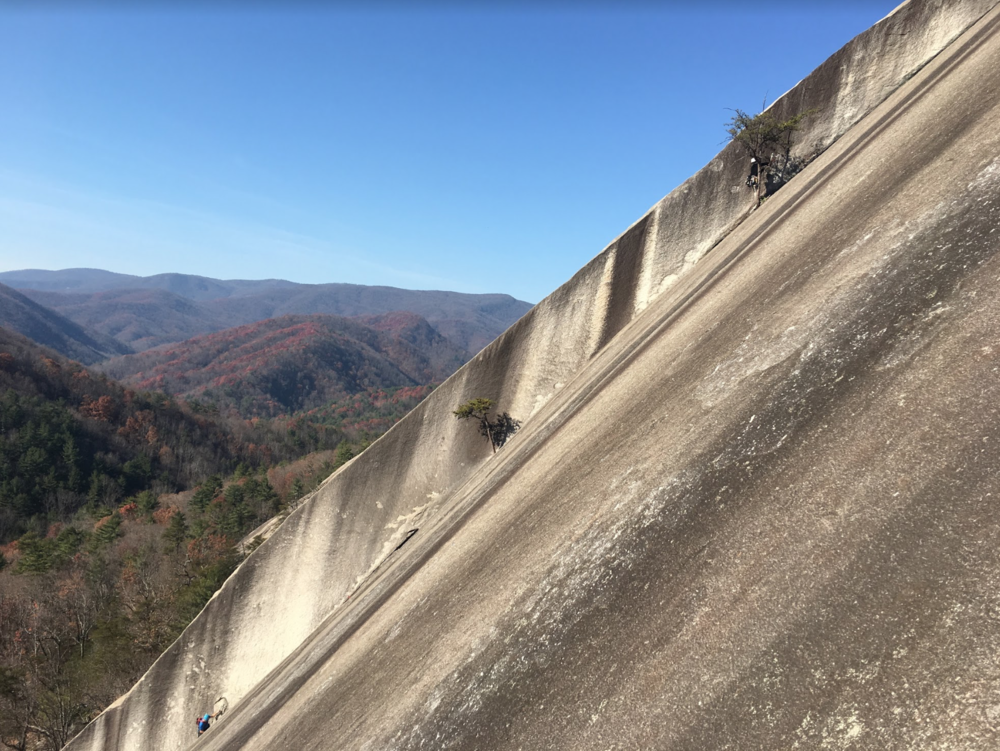The Land and Water Conservation Fund (LWCF) is one of our nation’s most successful conservation tools. Created in 1965 from offshore oil and gas royalties, LWCF authorizes $900 million per year for the acquisition of land and water to protect natural treasures, with an emphasis on recreation. LWCF has supported 42,000+ projects to develop parks and outdoor recreation projects in all 50 states.
Without timely action from Congress, this popular, bipartisan program will expire September 30th, 2018. If LWCF is not reauthorized, city urban areas, small local communities, states and national parks could potentially lose many millions of dollars—including those with premier climbing areas.
Please join us in asking members of Congress to support either a stand-alone bill, or an amendment to the FY 2019 Interior appropriations bill, that permanently reauthorizes the Land and Water Conservation Fund before it expires on September 30, 2018.
According to research by Access Fund, LWCF has been used to purchase or improve more than a dozen climbing areas, including:
AAC member Justin Fricke climbs in Chimney Rock State Park, NC. Photo: Adam Fricke
Wilson Peak & Black Canyon of the Gunnison National Park, CO
Seneca Rocks, WV
Bozeman Pass, MT
Castle Crags, CA
Palisades Park, AL
Stone Mountain State Park, Hanging Rock State Park, Pilot Mountain State Park, Chimney Rock State Park & Crowders Mountain State Park, NC
Cumberland Trail State Park, TN
Hueco Tanks State Park, TX
Custer State Park, SD
New River Gorge, WV
Many more... Use this tool to find your home crag!
STORIES FROM LWCF-FUNDED CLIMBING AREAS
"Stone Mountain is known as a premier slab climbing destination. Long run outs on off-vertical terrain characterize the climbing on this beautiful granite dome. Winter days at Stone can lead to climbing in a t-shirt with snow on the ground. Stone is home to many NC climber's first trad leads, such as the 5.5 Great Arch route which splits the South face and climbs a huge right-facing dihedral for 3 pitches to the top of the cliff." -AAC member Brian Payst (photo).
Some of the most popular climbing areas in NC have benefitted from the Land and Water Conservation Fund. Pilot Mountain, Stone Mountain, Chimney Rock and Crowder’s Mountain State Parks all have seen investments from this important fund. Pilot Mountain was one of the first parks in the state to receive LWCF funding, just two years after the fund was created in 1965 and Stone Mountain benefitted just two years later. LWCF funds have supported important acquisitions and expansions at Chimney Rock and Crowder’s Mountain. All of these are popular destinations for climbers.
As climbers, it’s easy to just grab the pack or pad and head for the day’s objective, but that route you’re on or the boulder problem you and your friends are sessioning was touched by the LWCF. We need to rally support for this important program and do everything we can to make sure it is permanently and fully funded. NC climbers have already reaped the rewards of the visionaries who established the LWCF and we’re set to see further gains in the future, but we won’t be able to do it unless it is reauthorized. Many thanks go to NC Senator Richard Burr, who recognizes the value the LWCF has brought to his state and is a leading champion for it in the Senate. However, Senator Burr can’t do this alone and we need your help. If you’ve climbed in NC or just hope to one day, now is the time to get behind the LWCF.
– AAC member Brian Payst, President of the Carolina Climbers Coalition
"Rumbling Bald at Chimney Rock State Park is home to over 400 routes and close to 1,000 boulder problems and is a regional destination in the Fall, Winter and Spring. The Bald also hosts the Carolina Climbers' Coalition's annual Rumble bouldering competition, which draws hundreds of climbers in January of each year. Technical face climbing, crack routes, high quality rock and an amazing diversity of boulder problems draw thousands of climbers in the prime seasons." -AAC member Brian Payst (photo).
[The LWCF-funded crag] Palisades Park, Alabama is the first place I tied into a rope, the first place I learned how to build anchors... the first place I took a lead fall, the first place I learned how to drill top-rope anchors, and the first place I learned to give back to the climbing community by participating in a trail day.
Located about 40 minutes from downtown Birmingham, the park sports dozens of high quality routes throughout the grades.
– AAC member Bob Farley
Photo: Christopher Neal
Like many climbing areas throughout the world, the boulders and cliffs at Rumbling Bald are simply conduits for connection. When I started climbing there in 2010 it was almost always with a group of friends that inevitably grew throughout the day as we met new people. Exploring the thick forest, sprinkled with granite boulders and capped by sheer granite cliffs, cultivated timeless bonds in all of us with people, place, and community. I’m not sure those same bonds would have been possible without that forest and the protection provided to it by the LWCF.
– AAC member Azissa Singh




